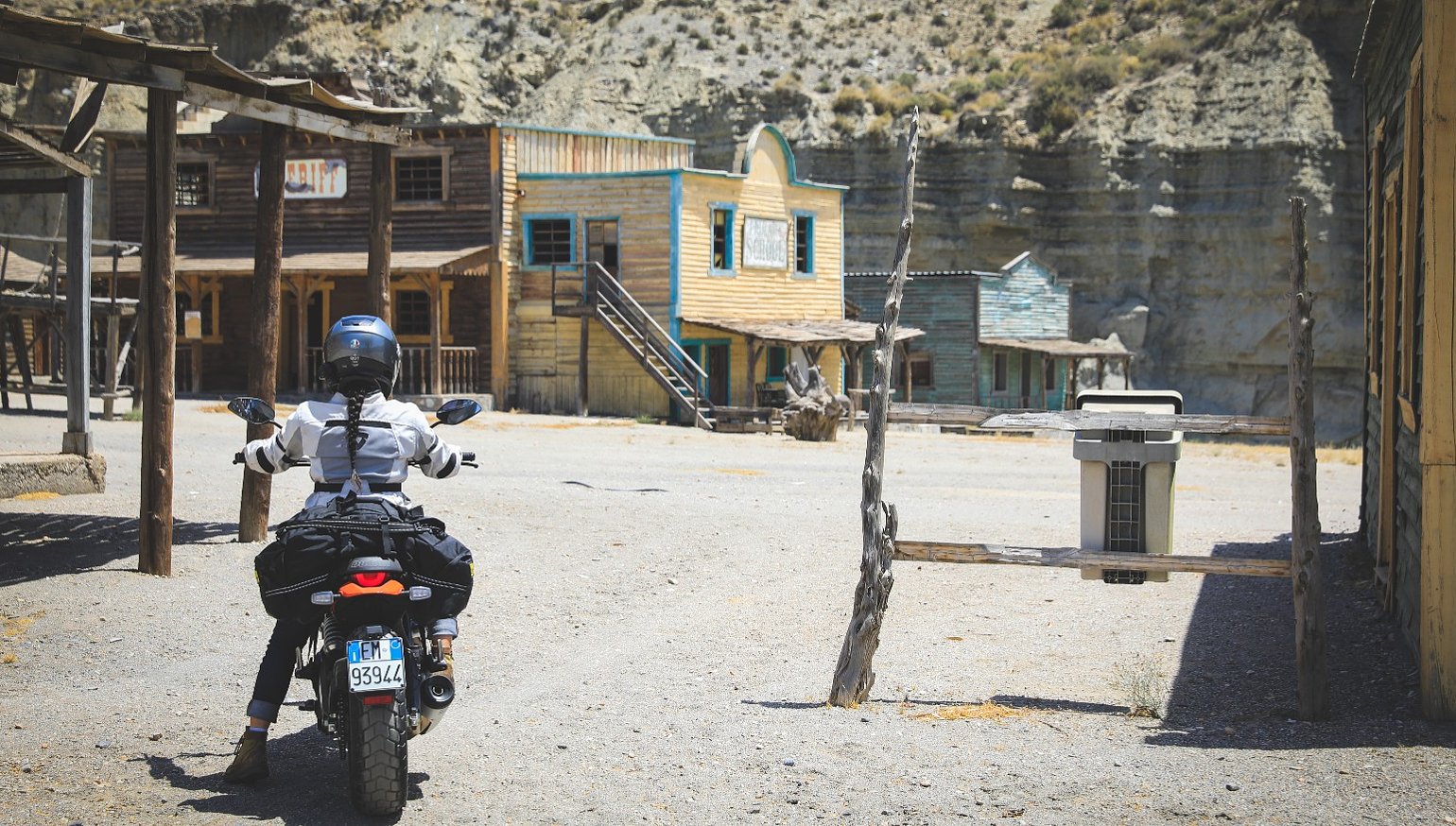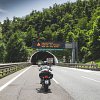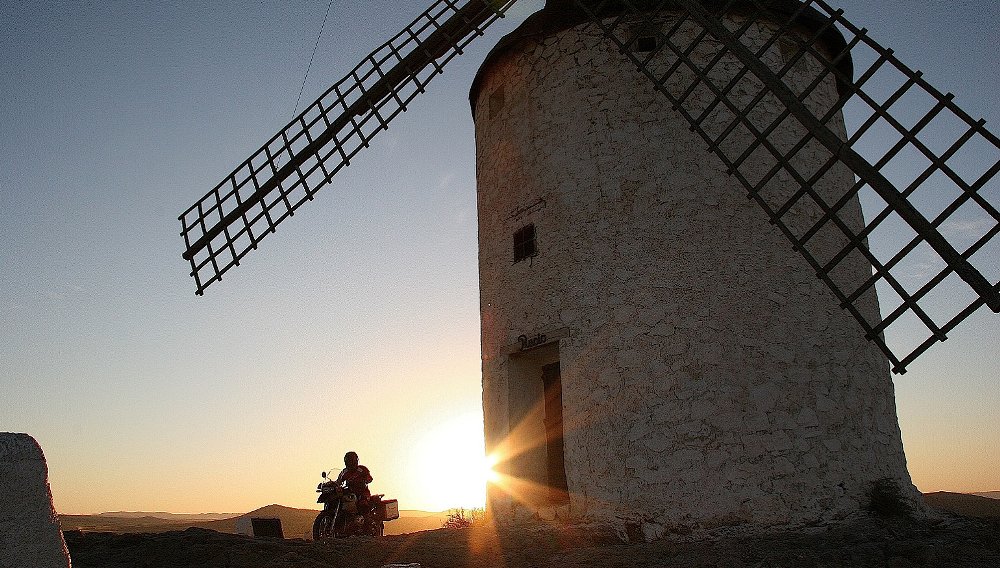He sauntered toward me, one hand resting atop the single-action Colt strapped to his hip. We made eyes. Then suddenly, he unholstered his six-shooter, pointed it at my sternum and in a thick Spanish accent uttered, “Bang! You’re dead.”
Slow on the draw, I managed to point the DSLR slung over my shoulder in his direction and return fire. I shot a few blurry frames of this Spaniard (dressed like an American cowboy) before we could lower our weapons and assess the damage. It was the modern iteration of a scene pulled straight from a Sergio Leone film.
Kyra and I were riding two very different Ducatis through southern Spain, just north of Almería, an ancient seaport in Andalusia which was founded in 955 A.D. by Abd-ar-Rahman III, an Arab Emir. An otherwise sleepy coastal town on the Alboran Sea, Almería is home to some of the most famous movie sets in cinematic history. Between 1964 and 1978, Sergio Leone and a cadre of other filmmakers descended into Southern Spain to film thousands (!) of Western movies, most notably the Dollars Trilogy, starring a young Clint Eastwood.
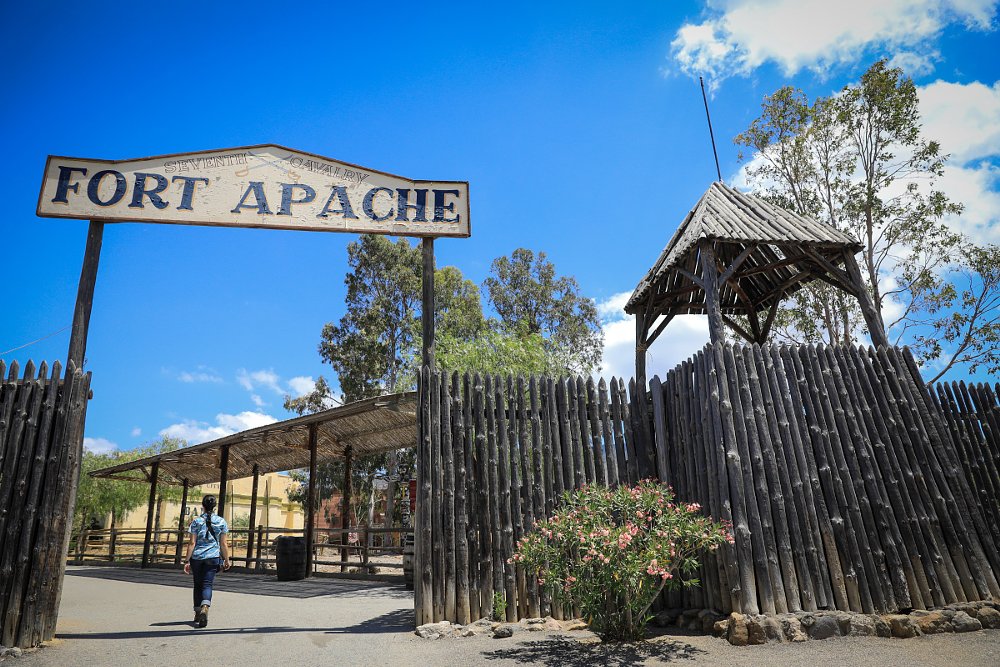
The sun sat high above our heads, punishing us for wearing pants and proper riding gear. It was early afternoon, and this was the first film set we had planned to visit. Oasys Mini Hollywood is one of four lots-turned-theme-parks within about a mile of one another and is easily the largest, with an active zoo attached to it. Entry fees paid, we collected a commemorative coin from one of those do-it-yourself machines that turn a penny into a keepsake, then wandered through the gate of "Fort Apache." The landscape of the Tabernas Desert is eerily similar to that of my makeshift home in Arizona. Palms and sagebrush were scattered about, and a low-slung mountain scape encircled the township at some distance.
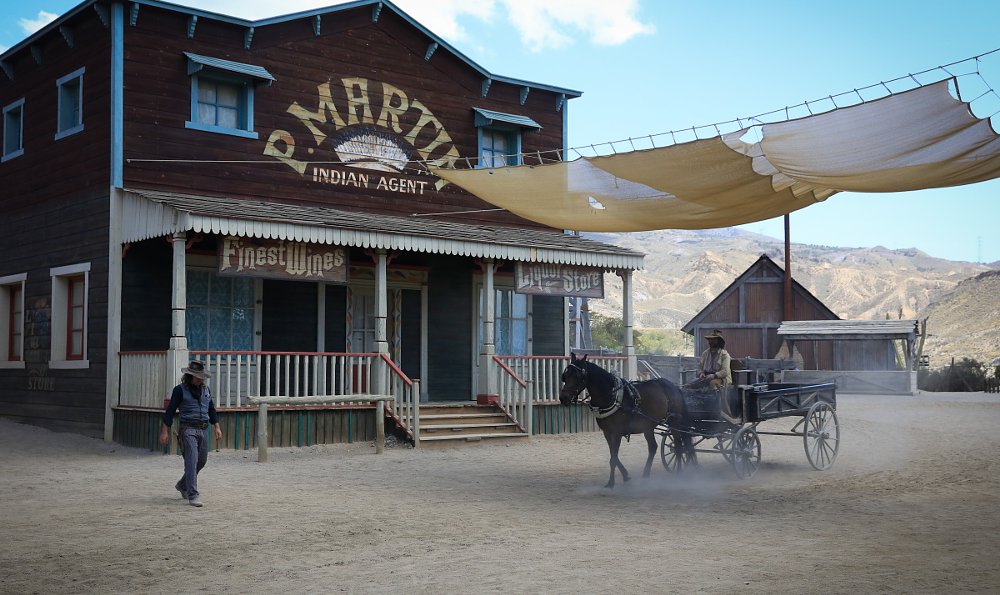
A horse-drawn wagon rounded the corner adjacent with a bearded cowboy at the bridle. A dozen or so actors (I believe this is called LARPING — Live Action Role Playing) wandered about, one of them sitting on the porch outside of his shop pretending to read a weathered old novel, while simultaneously checking notifications on his cell phone. Kyra and I imbibed cold beverages and a bag of potato chips in a saloon while a man stood solitary on the stage, singing country songs in a thick Spanish accent. The six or seven other tourists in the entire compound were easily outnumbered by the armed cowboys killing time.
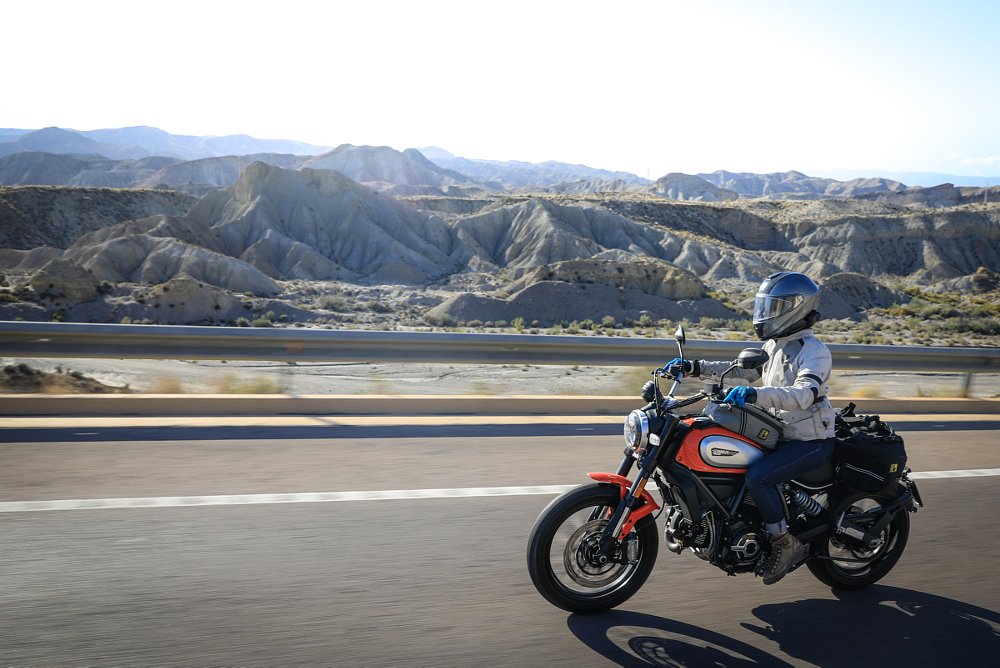
The road to the U.S. Old West in Spain
We’d made our way to the Tabernas Desert aboard a pair of Ducatis borrowed from the factory in Bologna a week earlier. A Volcano Grey Multistrada 1260 S and an Atomic Tangerine Scrambler Icon carried us on the 2,400-mile journey to Almería and back. Kyra strapped Wolfman luggage to the tail of her Scrambler while I filled my locking saddle bags with camera equipment and enough clothes for the two-week trip.
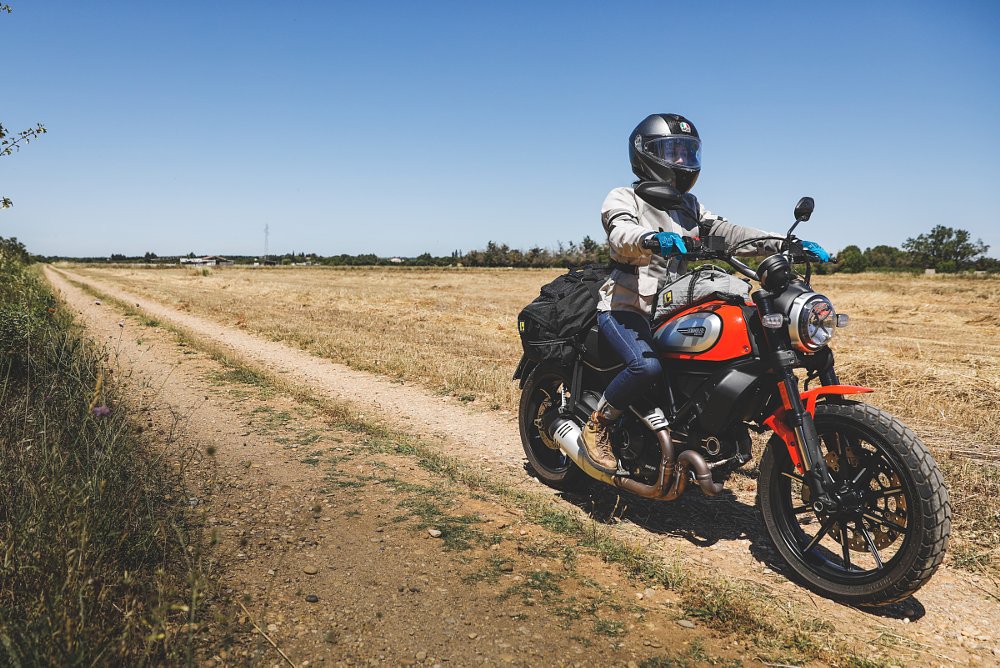
Initially, we’d planned to ride to the port of Civitavecchia outside of Rome, where we’d load the bikes onto a ferry bound for Barcelona. We figured it would save us a few days. But alas, our passports had been sent to Paris in order to acquire visas for a trip to Russia the following month, so, without them, we could not board the boat. This turn of events forced us to ride the length of the Riviera, passing through Monaco, Marseille and Barcelona along the way. What a shame.
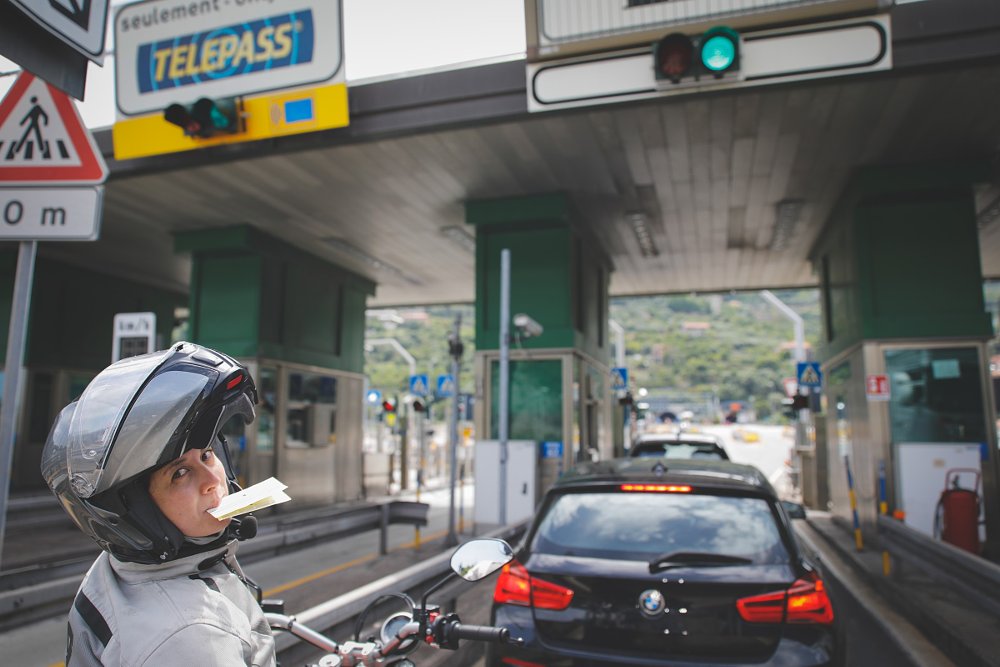
The elevated highways edging the Mediterranean Sea are littered with toll booths, each of which demands anywhere from three to 30 Euros from you, depending on the distance you’ve traveled. Kyra and I navigated our way out of Bologna and headed toward the Mediterranean, where the temperatures steadily declined as we neared the sea. Stopping for fuel along the Italian highways offered more than solace from the chill. It gave us a chance to enjoy a “café” (as locals call it) and snack (paprika Pringles, anyone?) at one of the countless Autogrills. Unlike our U.S. truck stops, Autogrill is an oasis amidst the tunnels and toll booths of the Italian Autostrade. Espresso as our fuel, we made haste along the E35 through Modena, turned south outside of Parma and hit the highway that edges the Mediterranean in stride. Our first stop would be Aix-en-Provence, a small industrial town outside of Marseille, where we would spend the night. Nothing special. But the hotel offered a warm meal, wine and cool enough place to sleep.
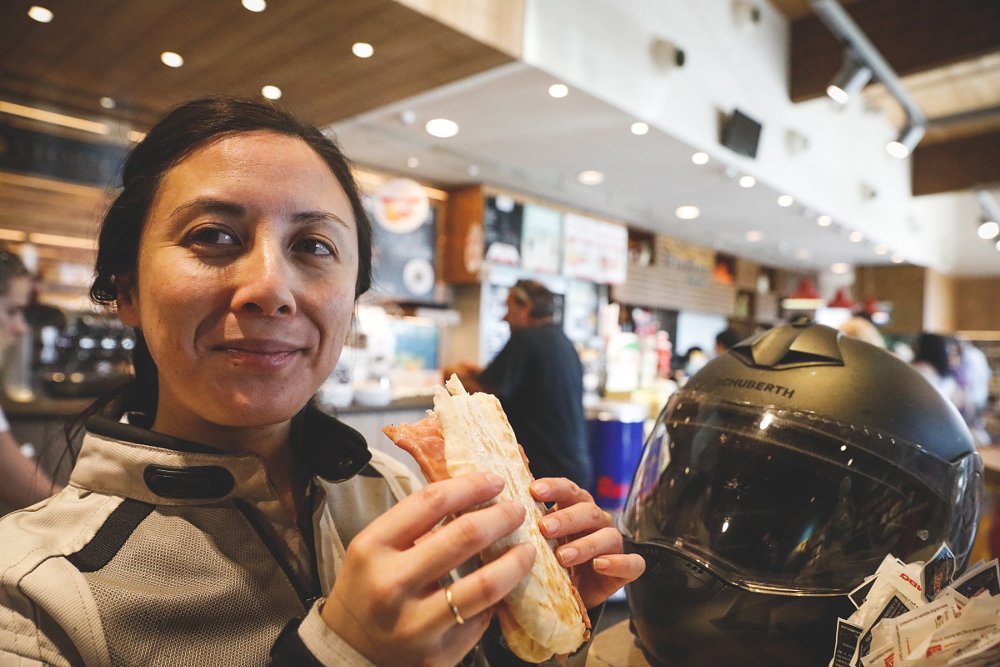
The Multistrada 1260 S is a machine that meets all of my needs. It produces ample power — 156 horsepower, to be exact — has cruise control, an adjustable windscreen, locking luggage and suspension which asks, politely, to be abused. Unfortunately for me, the majority of our ride to the Tabernas Desert would take place on highways designed more for a motorcycle acclimated to the long and straight, as opposed to the tight and twisty.
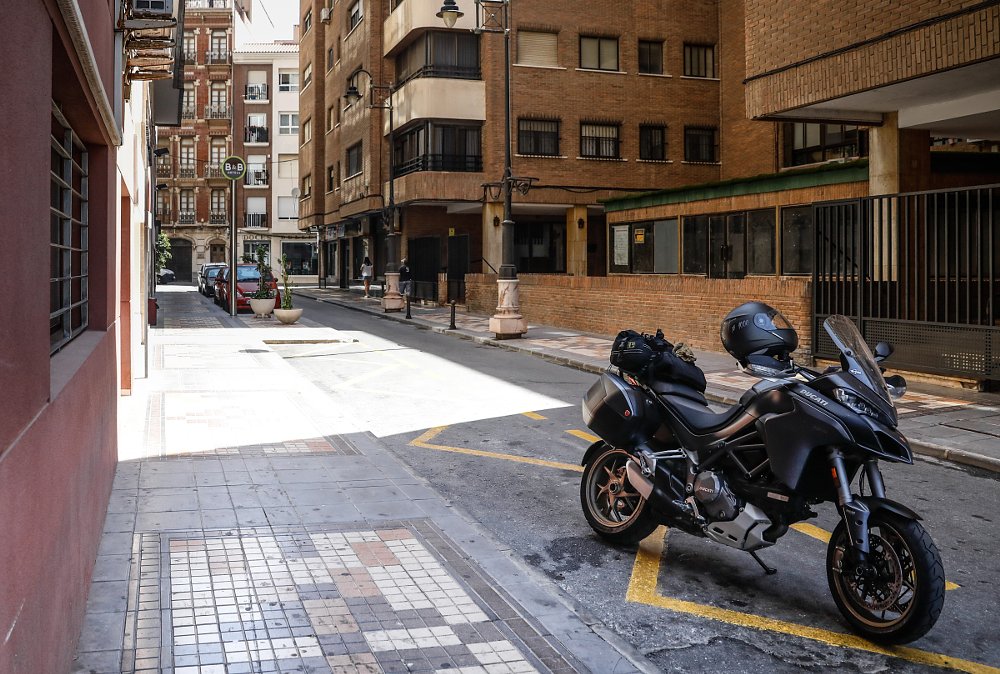
Kyra’s Scrambler, in contrast, is a bike that prefers short hops around the city, or trysts down dusty dirt roads in the Italian countryside. It is not the ideal tool for traveling long distances, but with some soft luggage strapped to the tail, she managed the miles without complaint. If anything, the Icon suffered from a lack of torque compared to my Multi, which was obvious when I accelerated to a certain kilometer-per-hour, switched on my cruise control and watched Kyra and her atomic tangerine machine fade into the distance.
We entered Spain and once we’d escaped the inner-city traffic through Barcelona, much of the riding was smooth sailing along a scenic route taking us toward Andalusia. Our first excursion was the seaside settlement of Tarragona, befit with a Roman amphitheater and other such ruins.
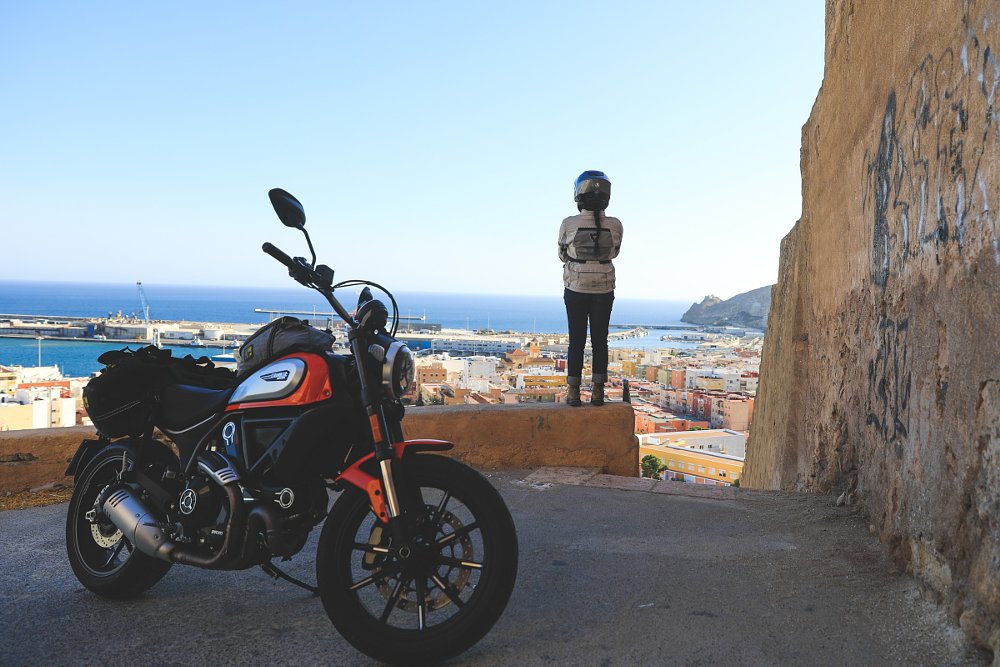
Cartagena would serve as our next stop. It’s a quiet, immemorial place with tremendous trees and stunning architecture left somewhat undiscovered and overlooked as most tourists to this region opt for Valencia, which in contrast felt commercial and modern.
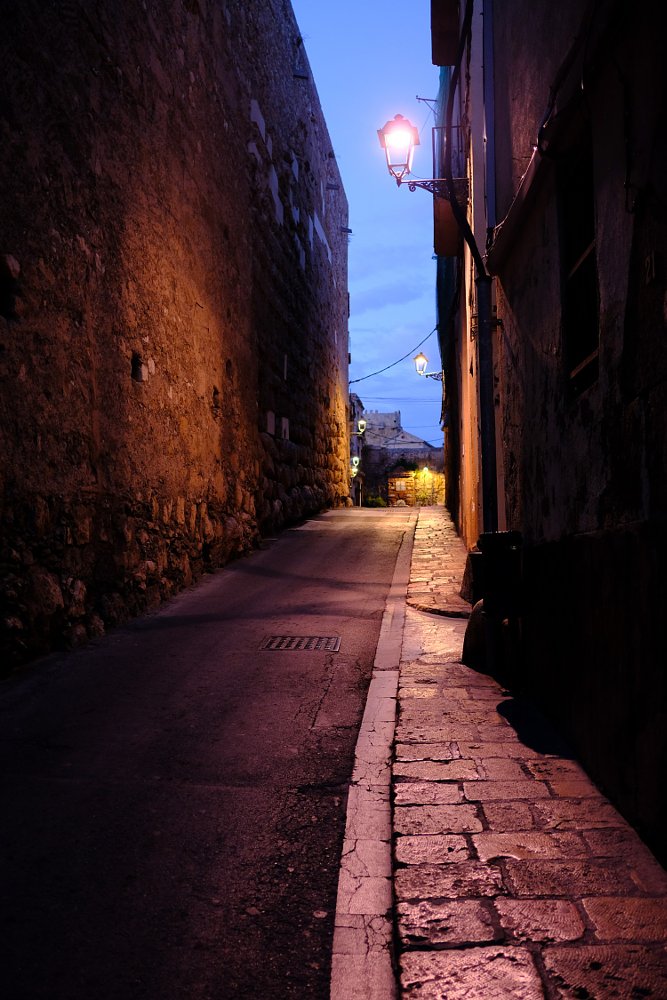
The narrow, aging roadways of Cartagena, a metropolis founded by the Carthaginians around 220 B.C. and that boomed during Roman times, served as an interesting backdrop for our heavily laden Ducatis. The juxtaposition of our expedition-grade motorcycles in comparison to the scooters and small Citroens lining the streets was evident when we pulled up to the Plaza San Francisco for dinner. Eyes wandered our way and questions were asked as we stood in gear next to our bikes like aliens landing in Egypt.
That night, after a thousand-plus kilometers, we indulged in a long dinner, conversations in broken English and a late curfew. Our next destination the next morning would be Almería, gateway to the Wild West, only a short 200-kilometer journey.
The remains of a small stone home overlooking the Tabernas were proof this was not, in fact, the American Southwest. A dirt road led us away from the highway into the stark, sandstone-colored hills surrounding Oasys Mini Hollywood.
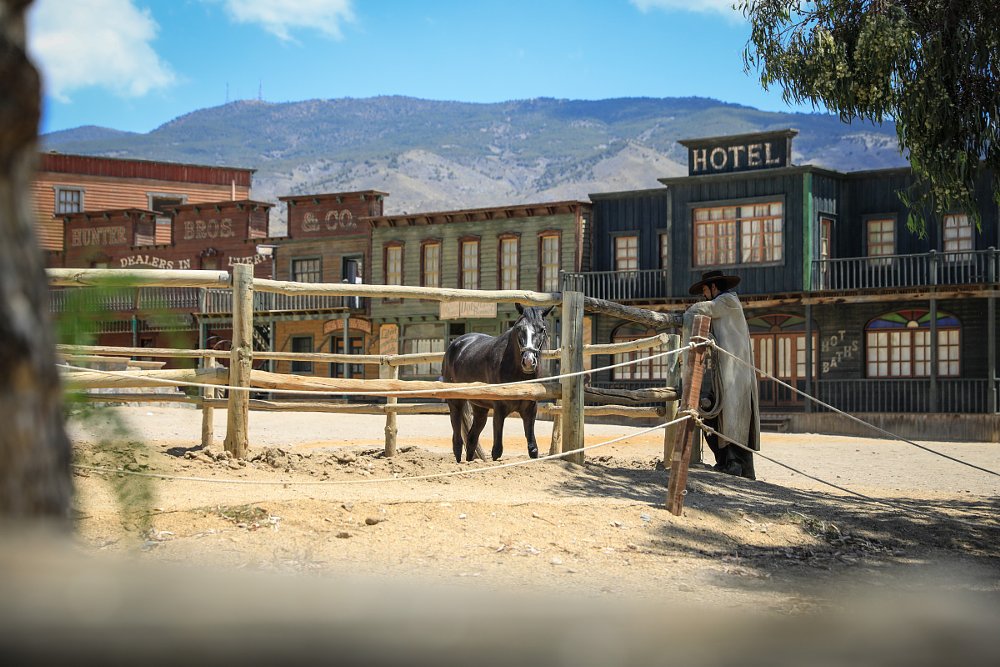
From a distance, the movie set and animal amusement park looked right at home, a ghost town in a desolate desert somewhere south of Tucson, Arizona. The funny thing is, however, the two worlds share more than just an aesthetic symmetry. These film sets, once home to cowboys with no names, six-shooters and cattle ranchers, are now left to die a slow death like the forgotten frontiers of the Wild West they imitate. The occasional tourist wandering about their dusty streets, peering through windows, picturing themselves as gunslingers — heroes and villains from a simpler time — enshrined in a historic cinematic era. The glory is gone from these movie locations, these ill-fated echoes of the past, left only as crumbling landmarks for those of us who appreciate the Spaghetti Western, Sergio Leone and all the gun fights which happened at high noon.
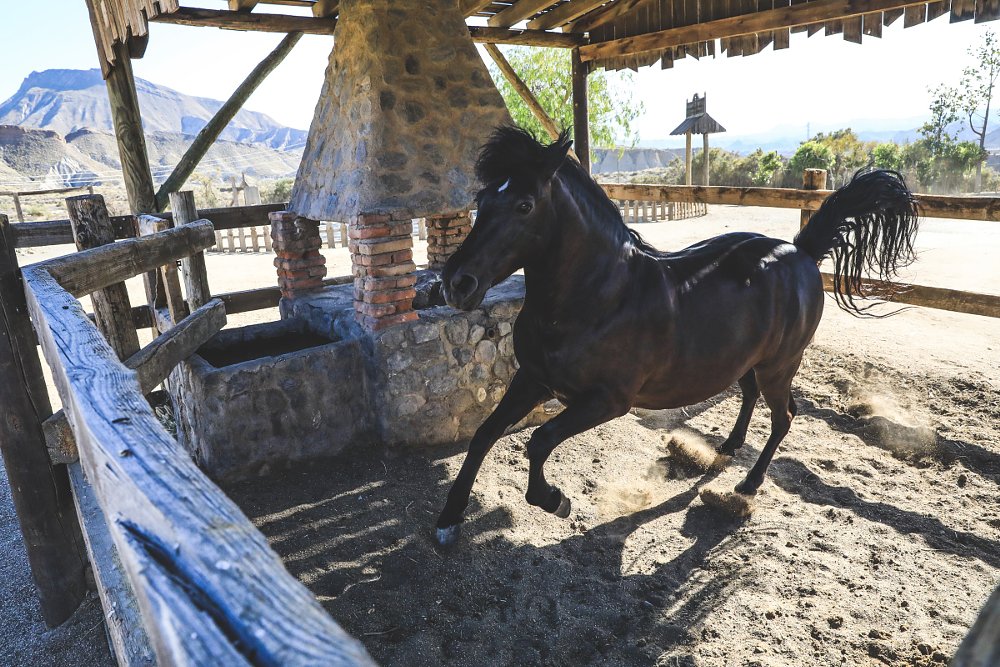
It would be three days before we made our way back to Bologna, the same way we’d come. We dragged our feet a bit, namely because a friend at Ducati offered us passes to the MotoGP race outside of Barcelona. Tolls were collected, speed limits exceeded, and the coastal Mediterranean landscape became a streak of colors across our windscreens. Behind us was the post-Civil War epoch which captured the imagination of so many people in countless movie theaters.
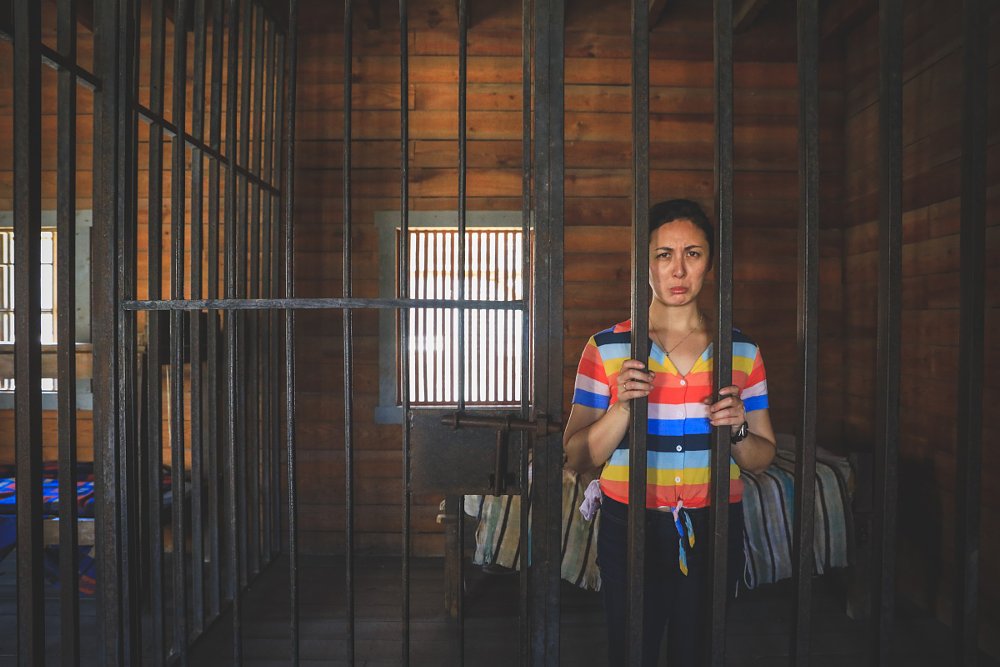
Like Halloween costumes come to life, the imaginings of Sergio Leone and other aspiring Italian filmmakers are there for the fans still, but not for long. Like the abandoned boroughs littering America’s deserts, plains and highlands, these too will soon rest under a mid-day sun, left vacant until another generation is inspired to re-invent the West.




